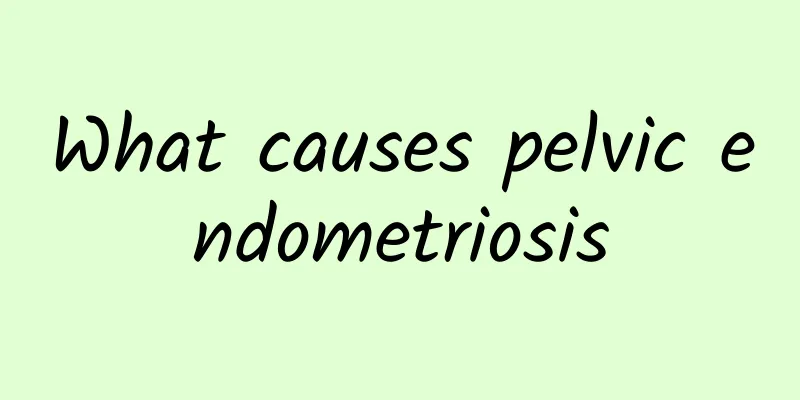What causes pelvic endometriosis

|
Pelvic endometriosis may be caused by retrograde menstruation, iatrogenic implantation, lymph node and venous spread, genetic factors, immune factors, etc. It is necessary to go to the hospital's gynecology department for examination and diagnosis and actively receive treatment. 1. Retrograde menstruation: Pelvic endometriosis usually presents as secondary dysmenorrhea, which is more common in women of childbearing age. It may be caused by retrograde menstruation, which flows along the fallopian tube into the pelvic cavity and continues to grow or spread, causing pelvic endometriosis. You can follow the doctor's instructions and use drugs such as medroxyprogesterone acetate tablets, megestrol acetate tablets or norethisterone tablets to improve amenorrhea or false pregnancy. 2. Iatrogenic implantation: It may be secondary to abdominal wall incision endometriosis after cesarean section, or it may be caused by direct implantation of the endometrium in the incision during surgery. You can use indomethacin tablets, ibuprofen sustained-release tablets or naproxen tablets and other drugs under the guidance of a doctor to achieve anti-inflammatory, antipyretic and analgesic effects. 3. Lymph node and venous spread: usually the endometrium spreads to distant places through lymph nodes and veins, and endometriosis occurs in organs far away from the pelvic cavity. For older people or those who do not want to have children, conservative treatment is not effective, and radical surgery is required when necessary, such as removal of the entire uterus or bilateral adnexa. 4. Genetic factors: There is a certain degree of familial aggregation. If there is a family member with liver disease, the chance of passing it on to children is relatively high, especially if the mother has endometriosis, which may also increase the risk of the daughter getting the disease. If there is no desire to have children, and the symptoms are severe and recurrent, radical surgery is required. 5. Immune factors: It may be caused by an abnormal immune system in the body that cannot remove the endometrial tissue outside the uterine cavity, or it may be caused by treating the ectopic endometrium as its own tissue and not being able to completely remove it. If a cyst is formed with a diameter of 4 cm or more, it can be treated with laparoscopic minimally invasive surgery. In addition, it may also be caused by inflammatory factors, which can be diagnosed through laboratory tests or imaging tests. Take good care of yourself during the illness, and if you feel any discomfort, it is recommended to go to the hospital as soon as possible. |
<<: What are the symptoms of premature ovarian failure?
>>: What are the symptoms of uterine fibroids?
Recommend
What is the cause of irregular menstruation?
What causes irregular menstruation? The reasons f...
What are the first symptoms of threatened miscarriage?
What are the first symptoms of threatened abortio...
Women should be aware of the early symptoms of ectopic pregnancy
It is very common for women to have ectopic pregn...
Can’t I apply medicine to the vagina after an abortion?
There are too many girls who have abortions in li...
At what age does menopause usually occur?
Most women go through menopause between the ages ...
How many days does the stomach hurt after a miscarriage? Many women want to know this question
Spontaneous miscarriage is a huge blow to many wo...
Is pelvic effusion pelvic inflammatory disease?
In clinical practice, most pelvic effusions are c...
Treatment of Trichomonas vaginitis
The pathogen of this disease is Trichomonas vagin...
The culprit of fatty liver is not just obesity and alcoholism! Dr. Luo Qingchi: "This 1 trick" can reverse fatty liver
The liver is a silent organ. When too much fat ac...
Analysis of self-relief of menopausal syndrome
Menopause is a necessary stage in life for women....
Is 19mm of pelvic fluid serious?
Pelvic fluid accumulation of 19 mm is usually not...
Tell you about the common sense of vulvar leukoplakia care
Vulvar leukoplakia, also known as "vulvar wh...
4 ways to develop swan arms and effectively solve the problem of bend sleeves
(Photo provided by Sharp Point Publishing) [POSE1...
3 treatments for endometriosis
There are 3 treatments for endometriosis: Before ...
When eating Japanese deep-fried pork cutlet, is it necessary to pair it with shredded cabbage? The answer is revealed by the famous Japanese doctor
If you like to eat Japanese fried pork chops, the...









